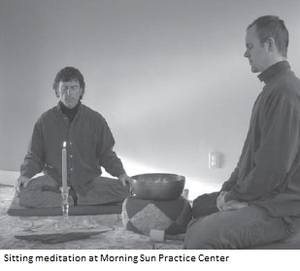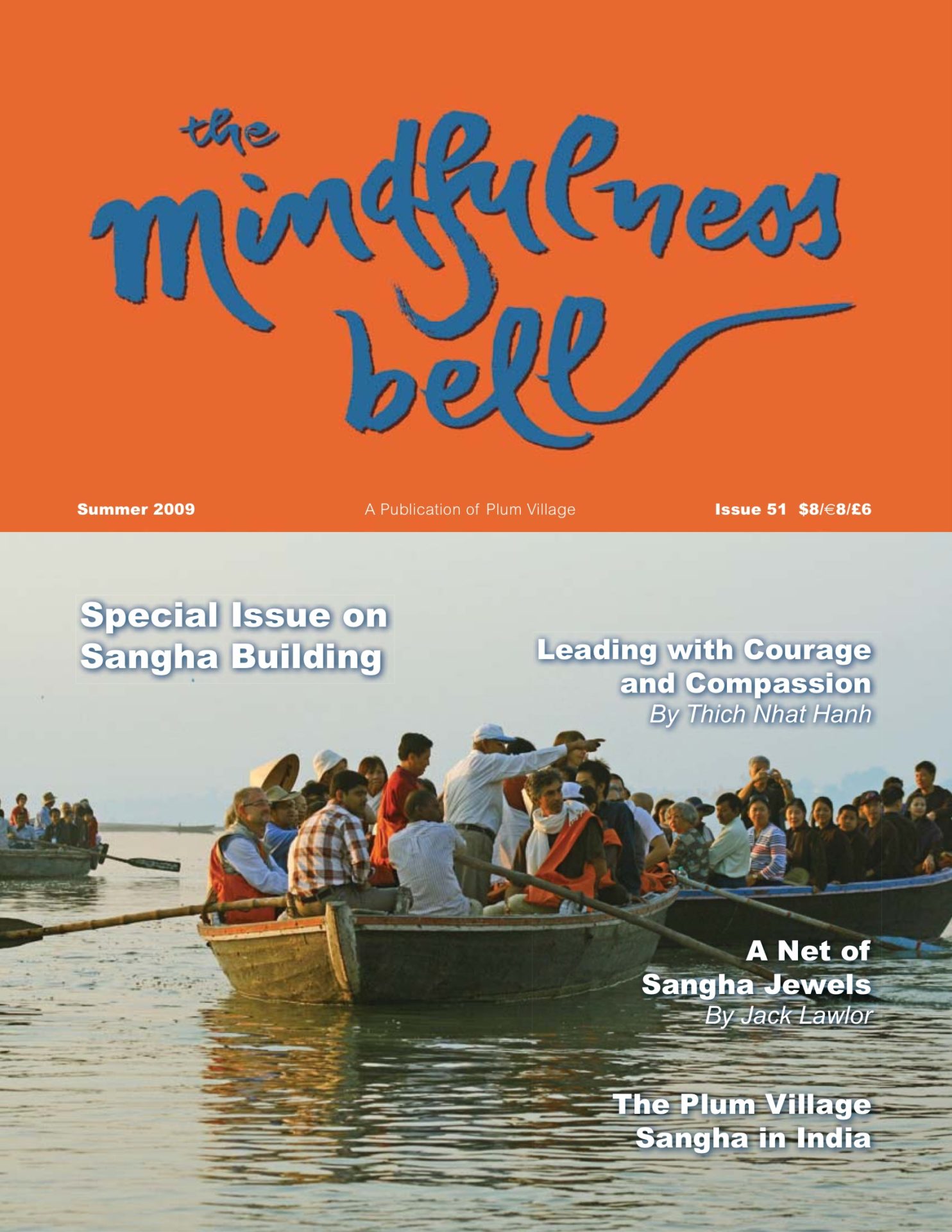The Umpqua Area Mindfulness Sangha
By Hope Lindsay

Eleven years ago, our home-based Sangha in Roseburg, Oregon began with three friends. Each of us invited others and at our zenith, about twenty people were on our reminder list with as many as fourteen at any session. Because we came from various traditions, or none at all, we had no particular structure until one of us attended a retreat with Thay and registered our Sangha with the Order of Interbeing.
The Umpqua Area Mindfulness Sangha
By Hope Lindsay

Eleven years ago, our home-based Sangha in Roseburg, Oregon began with three friends. Each of us invited others and at our zenith, about twenty people were on our reminder list with as many as fourteen at any session. Because we came from various traditions, or none at all, we had no particular structure until one of us attended a retreat with Thay and registered our Sangha with the Order of Interbeing.
As time will do, the years drew us in different directions. Changes in jobs, relationships, and family needs took many of us away. For me, a painful transition took place. During our third year I joined the Order of Interbeing, but others wanted different Buddhist orientations. Some had attended Ruth Denison’s Dhamma Dena and felt deep loyalty to that tradition. One person was a devotee of Jack Kornfield and vipassana; one dismissed our tradition as “just mindfulness”; still others found that Tibetan traditions suited them best. Finally, two formed a pre-session study hour for pondering the meaning of the Buddha’s teachings and made a decision that our Sangha should be closed to new attendees unless they had an established history of Buddhist practice.
To myself, I repeated the refrain, “Form is emptiness, emptiness is form.” It felt like a power struggle was taking place in a Sangha that had begun in tranquility. The closer we came to a purist form, the further away from openness, inclusiveness, and time for discussion. Our numbers began to dwindle.
Luckily, the minister of Umpqua Unitarian church suggested that I hold a mindful meditation session at the church. The only time available for the space was Wednesday noon. The time of day limits us, perhaps, but we are mostly retirees. A small subgroup comes from an Alcoholics Anonymous meeting and our Sangha takes on a bit of that flavor. Rather than attention to form, we focus on contemplation, spiritual growth, and insight. Our numbers are growing.
Most of the attendees have a keen sense of social justice and participate in activities such as Women in Black, hospice volunteering, or community action committees; some members sponsor seasonal giving to homeless, animal shelters, third world countries, and so on. When I was drawn to Thay’s teachings many years ago, it was a similar combination of social outreach and contemplation, meditation and daily dedication to the precepts that attracted me. I like this Sangha very much.
Whether it is my shortcoming or my memory of the former Sangha’s struggle, we are not fully structured in the style of Order of Interbeing. We do read the Five Mindfulness Trainings — one Training each week. This seems popular. We open with a bell, lighting incense, a brief reading, silent meditation for twenty minutes, followed by one of the Trainings and a reading that reflects the precept. Most of us sit in chairs. Some of us are ailing, so we do not do walking meditation except at occasional Saturday retreats. And heaven forbid that we sing! No one knows the OI songs but me and I can’t hold a tune. Also, we are rural and out of the way for other OI members to visit us and refresh our practice.
I feel at home in this Sangha. But I do not wear my beloved brown jacket. It would set me apart too much. Instead, I put it on for meditation at home, my private sacred moment.

Hope Lindsay, True Recollection of the Dharma, worked as a social worker and counselor in hospitals, school districts, and community mental health settings. Now that she has retired she is fulfilling her dream of being a writer.

